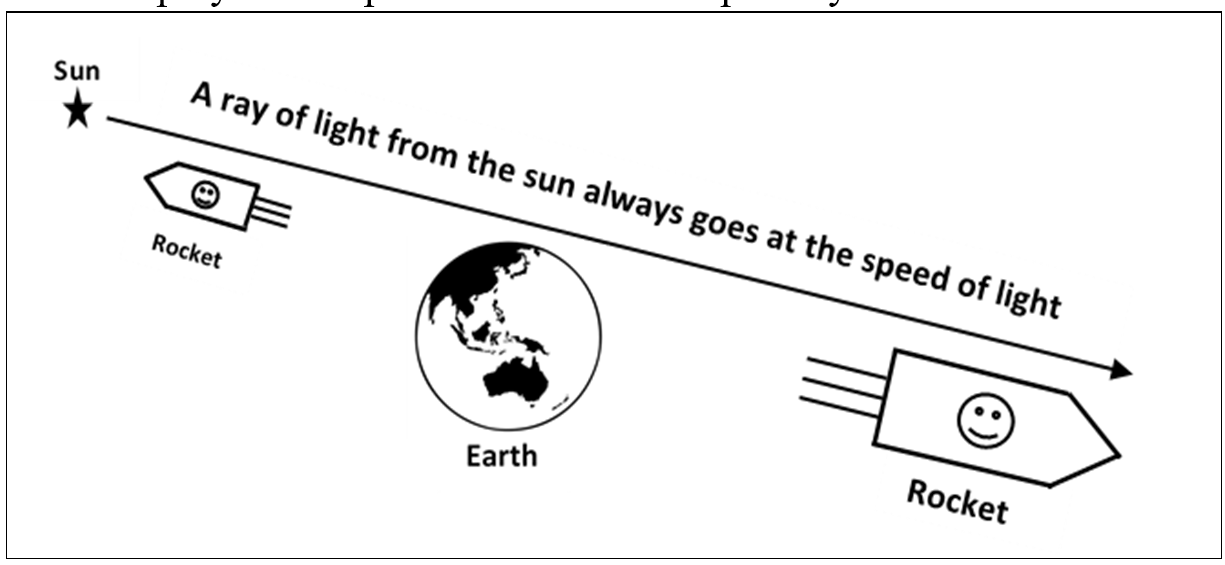Light goes at the fantastic speed of 670 million miles per hour, all the way to the moon in a second. Can we achieve this speed? What about a leap-frog method, like a rocket going at half the speed of light that shot a bullet forward at half the speed of light? Unfortunately, doing this changes time and space so the bullet only goes at four-fifths the speed of light!
What if we gradually accelerate a rocket up to the speed of light? Nature again intervenes by increasing the rocket mass until at near the speed of light its near infinite mass needs a near infinite force to move it. This contradicted the conservation of mass and the law of thermodynamics, that energy in a closed system can’t be lost, but Einstein’s answer was that energy and mass convert by E=mc2, so nothing is really lost. He didn’t say whether mass was a form of energy, energy was a form of mass, or both were aspects of something else.
In theory, in a rocket going 5mph slower than the speed of light one could throw a ball at 5mph per hour to reach the speed of light but in practice one can’t produce the force needed to throw the ball. If the rocket had headlights, one might expect light to leave it at almost twice the speed of light but again Nature plays with space and time to keep the speed of light the same.

Relativity contradicts all our intuitions about movement. For example, if we sent two rockets from the earth at half the speed of light, one to the sun and one to Pluto (Figure 5.4), relativity requires that light from the sun passes both rockets and the earth at the same speed! How can the same photon pass both rockets, one going to the sun and one away from it, at the same speed? This makes no sense in classical or indeed any other terms.
In relativity, as in quantum theory, the equations work but again they don’t make any sense. How can space that is the measure of movement, itself “move”? How can time that is the measure of change, itself change? It cannot be, yet the evidence we have suggests that it is so.
Einstein deduced how space and time had to change for our world to be as it is, but he didn’t explain it, no doubt expecting physics to unravel the mystery in time but it is now a 100 years later and we are none the wiser! How matter changes space and time must relate to how it moves but the current assumption that inert matter has a natural property of movement offers no clues. What then does quantum realism suggest?